ISSN ONLINE(2319-8753)PRINT(2347-6710)
ISSN ONLINE(2319-8753)PRINT(2347-6710)
J.Sathish1, C.Gomadurai2
|
| Related article at Pubmed, Scholar Google |
Visit for more related articles at International Journal of Innovative Research in Science, Engineering and Technology
The effect of addition of secondary inlet on particle collection efficiency of cyclone separator was studied. The centrifugal force acting on the particles was varied by providing double inlets to the cyclone separator and hence its particle collection efficiency was altered. A cyclone separator with dual inlets was fabricated. Experiments were conducted in order to analyze its performance by considering the individual gas flow rates in each inlet, gas flow rate ratio of the two inlets and particle to air ratio (particle concentration) as the parameters. The proposed cyclone separator had a difference in performance in collecting the particles from gas-solid mixture and the actual performance was observed after conducting experiments. To study the operation of cyclone separator, calculate the inlet gas velocity, collection efficiency, air flow measurements in rotameter and flow rate of air.
Keywords |
| Gas solid separation, efficiency, cyclone separator |
INTRODUCTION |
| Cyclone separator is a type of gas –solid separator employing centrifugal force, and are widely used. They are basically simple constructions, can be made from a wide range of materials and designed for high temperature and pressure operation. Cyclones are also extensively used for separating solid from liquids, especially for the purpose of classification. Here, we use cement and sand as the feed. Dual inlets were used which leads to the increase in particle collection efficiency of cyclone separator. When the flow rate gets increase, particle collection efficiency simultaneously gets increased. Due to the usage of two inlets in cyclone separator, centrifugal force will also increase. Three manometers and two orifice meters are used to measure the pressure drop and flow rate. These are the arrangements used in this project. |
THEORY |
| Cyclone is the most widely used centrifugal separation equipment for separating dust or mist from gases. It consists of a vertical cylinder with a conical bottom, a tangential inlet near the top, and an outlet for dust at the bottom of the cone. The incoming dust laden air travels in a spiral path around and down the cylindrical body of the cyclone. The centrifugal force developed in the vortex tends to move the particles radially toward the wall, and the particles that reach the wall slide down into the cone and are collected. The cyclone is basically a settling device in which a strong centrifugal force, acting radially, is used in place of a relatively weak gravitational force acting vertically. |
DESCRIPTION |
| The set up consists of I.D. blower connected to discharge side of cyclone separator .A flow meter with manometer is provided to measure flow of air. Collector is provided to collect solid particles .Flow control valve and by pass valve are provided for control the flow. |
MATERIALS AND METHODS, BLOCK DIAGRAM |
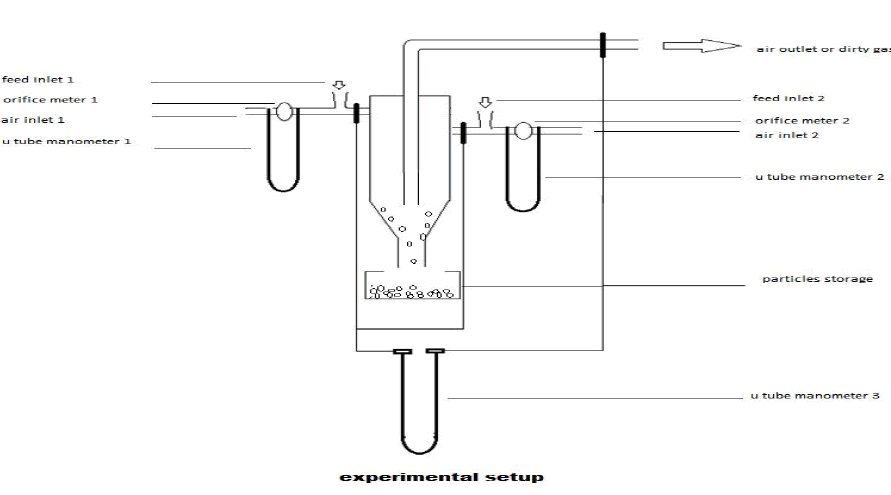 |
| The setup consists of three u-tube manometers and two orifice meters. There are two inlets and one outlet. One u-tube manometer is used to measure the flow rate of air inlet 1. Second u-type manometer is used to measure the flow rate of air inlet 2. Third u-tube manometer is used to measure the pressure drop between two air inlets. Two orifice meters are used to regulate the flow rate of air inlets 1 and 2, respectively. Particle storage vessel is placed at the bottom of the cyclone separator to collect dense particles. There are two feed sections for sending the solid particles into the experimental setup. Initially air is fed into the air inlet 1 and 2, Meanwhile the feed is allowed to enter the chamber. We can measure the flow rate with the help of two manometers. The pressure drop across the air inlets 1 and 2 can be measured with the help of u-tube manometer. The finer particles leave the cyclone along with the outlet gas. At the same time, dense particles are collected at the particle storage vessel. By varying the air inlet flow rate, particle collection efficiency can be varied. The performance of cyclone separator is analyzed by varying the individual gas flow rates in each inlet, gas flow rate ratio of the two inlets, particle to air ratio. The centrifugal force determines the efficiency of cyclone separator. The centrifugal force can be increased by providing double inlet to the cyclone separator. Due to increase in the centrifugal force, there will be a good increment in efficiency of cyclone separator. After setting the flow rate of air inlet 1 and 2 at a range, the mass of a particles collected for known time is measured. The experiment is repeated for different flow rates of air. The experiment can be conducted for the opening of gas inlet 1 and 2 separately. The particle collection efficiency can be compared with one gas inlet and two gas inlets. The particle collection efficiency is plotted against the flowrate and particle size at inlet 1, 2. |
EXPERIMENTAL PROCEDURE |
| STARTING PROCEDURE: |
| Prepare feedstock of cement ,fine sand with constant average particle size. Note down the weight and size of particle of the feed. Switch ON the power supply. Start the cyclone separator. Fix the flow rate of air by adjusting the flow control. Note down the manometer reading. Feed the dust particles by opening the valve. Collect the particles from bottom. Measure the weight of particles collected from the bottom of cyclone. Repeat the experiment for different particle size. Repeat the experiment for different flow rate of air. |
| CLOSING PROCEDURE: |
| When the experiment is over switch OFF the power supply. |
NOMENCLATURE |
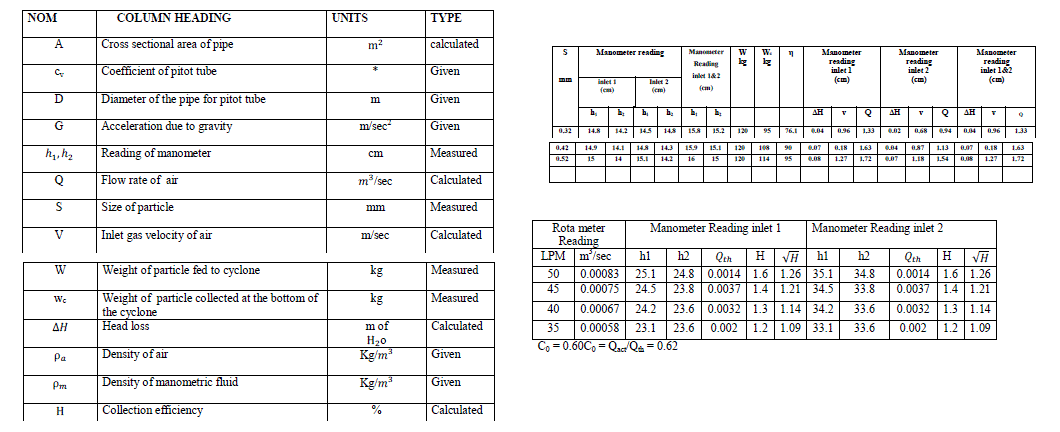 |
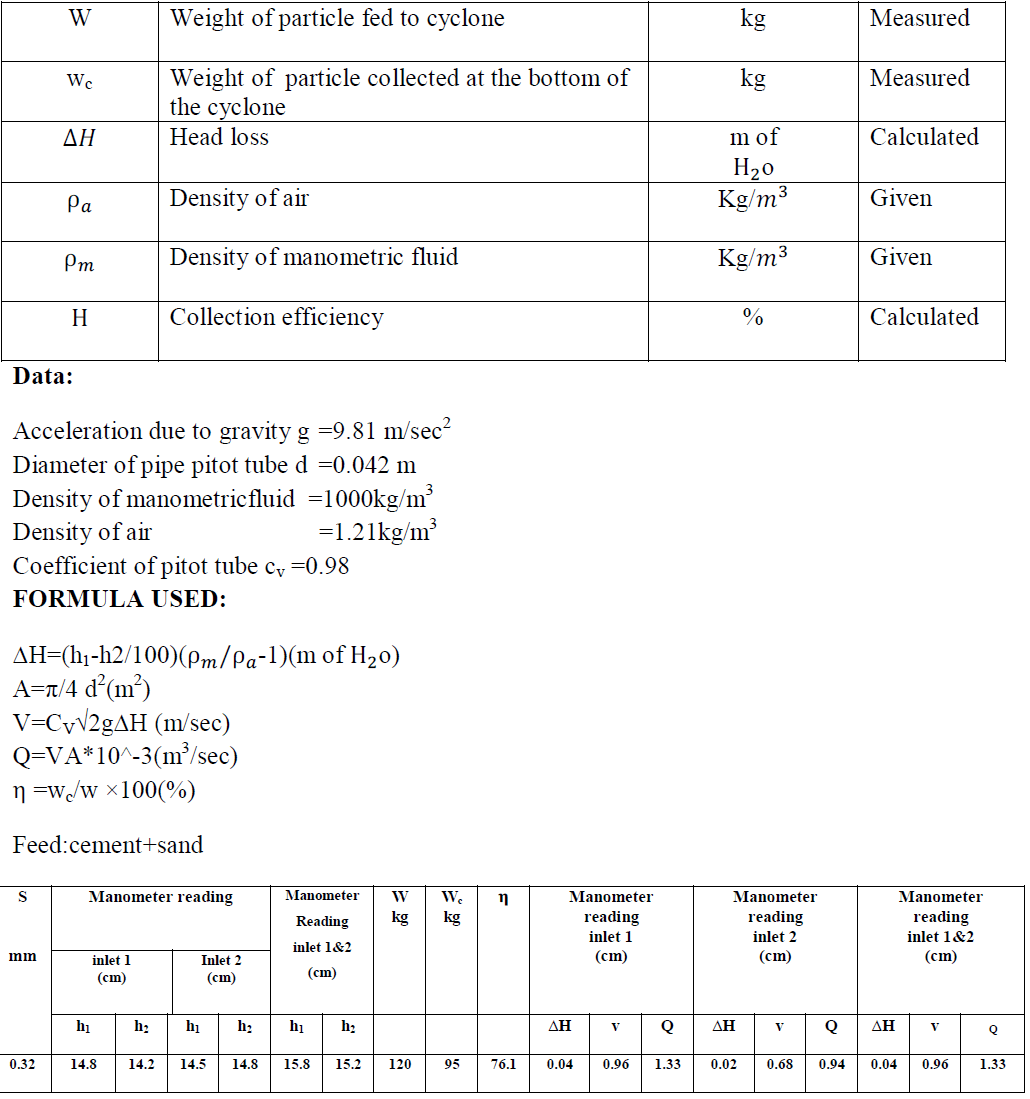 |
 |
AIRFLOW MEASUREMENT IN ROTA METER |
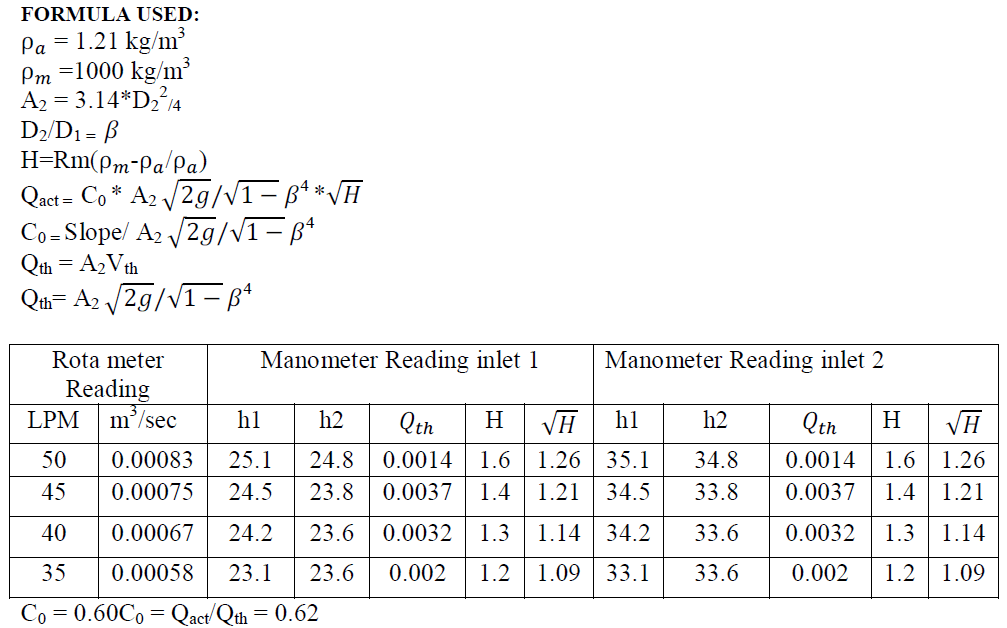 |
RESULT |
| The particle collection efficiency was studied by varying the particle size of the feedstock. These values were tabulated in Table 1. Using these values a graph 1 was drawn which shows that as the particle size increases efficiency increases. The flow rate values of inlet 1& 2 and its efficiency were tabulated in Table 1. Using the corresponding readings graph 2, 3 & 4 were drawn from which it was concluded that as the flow rate increases efficiency increases. So, it can be concluded that the usage of dual inlet increases particle collection efficiency. |
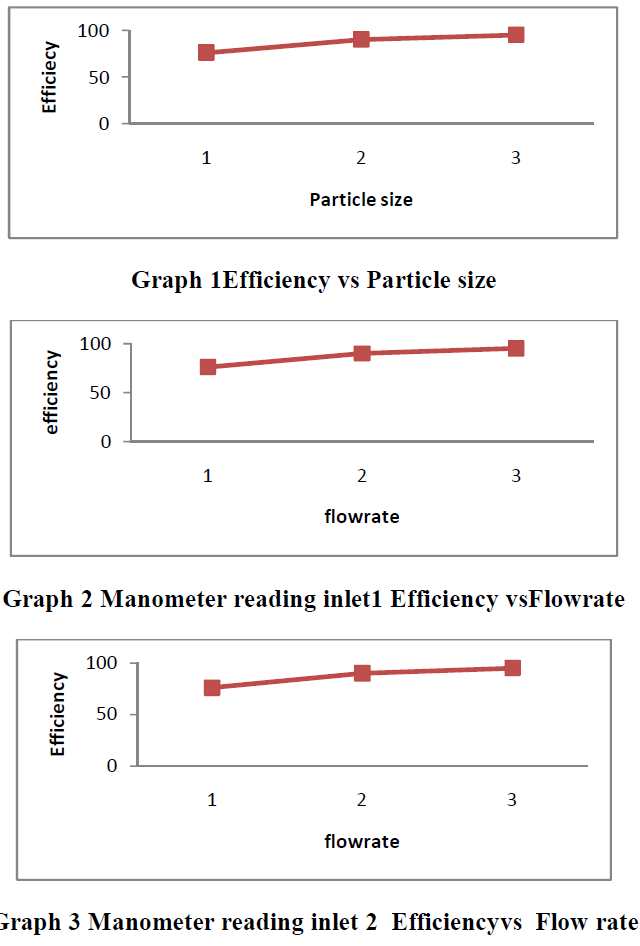 |
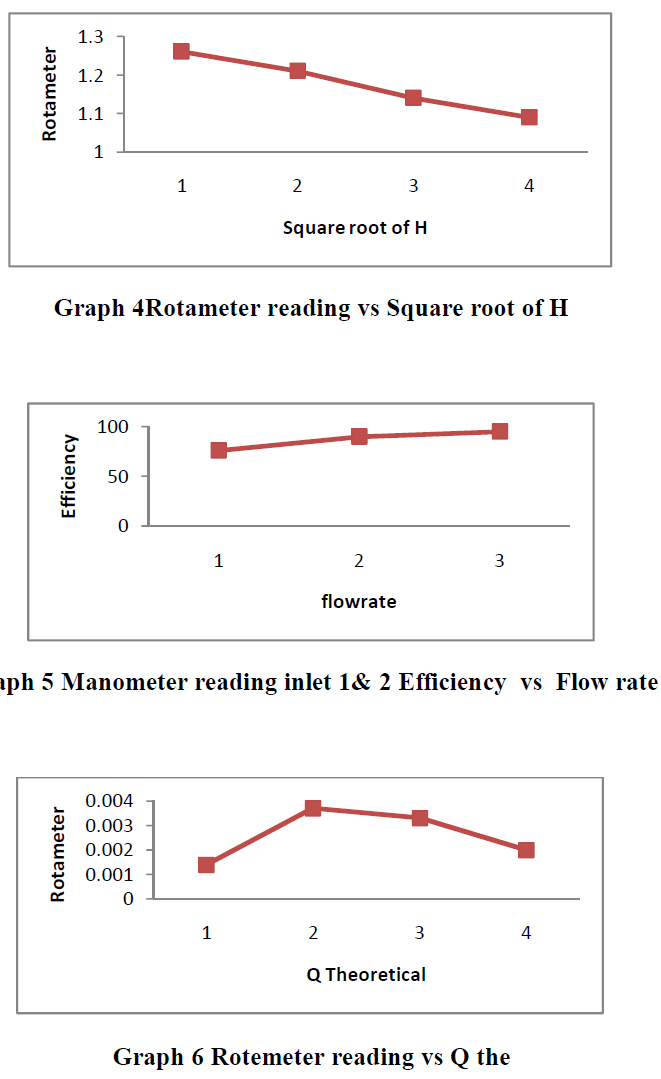 |
CONCLUSION |
| As the addition of secondary inlet to the cyclone separator can make significant changesin the centrifugal force acting on the solid particles, it is expected that the proposed cyclone separator could have better performance in collecting solid particles from a gas-solid mixture. |
References |
|